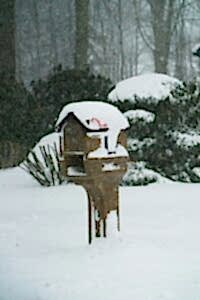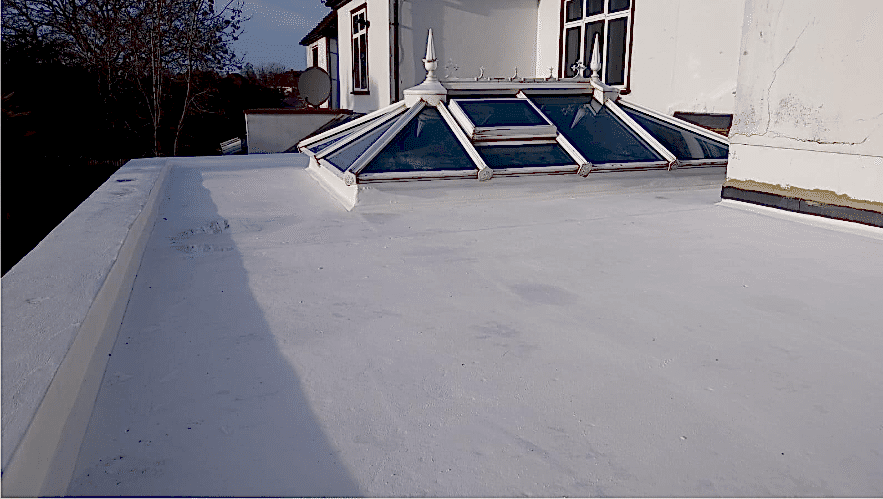 Have you ever thought about how the changing seasons impact your mailbox? Just like your home, your mailbox needs a little TLC to stay in tip-top shape throughout the year. Whether it’s the scorching summer sun or the icy grip of winter, each season brings its own set of challenges that can wear down even the sturdiest of mailboxes.
Have you ever thought about how the changing seasons impact your mailbox? Just like your home, your mailbox needs a little TLC to stay in tip-top shape throughout the year. Whether it’s the scorching summer sun or the icy grip of winter, each season brings its own set of challenges that can wear down even the sturdiest of mailboxes.
In this post, we’re diving into practical, easy-to-follow tips to help you maintain your mailbox all year round. By staying on top of seasonal maintenance, you’ll not only keep your mailbox looking great but also ensure it continues to protect your mail and packages effectively.
We understand that maintaining a mailbox might not be at the top of your to-do list, but a little effort can go a long way. From cleaning and repainting to preventing rust and preparing for winter weather, we’ll cover all the essential steps. Plus, we’ll highlight some must-have tools and supplies to make the job easier.
So, let’s get started! With our handy tips, you’ll have everything you need to keep your mailbox in pristine condition no matter what the season throws your way.
Understanding the Importance of Mailbox Maintenance
Why Regular Mailbox Maintenance is Crucial
Taking the time to regularly maintain your mailbox is more important than you might think. A well-maintained mailbox not only looks good but also serves as a reliable protector of your mail and packages. Let’s explore the key reasons why you should keep your mailbox in top condition.
Protecting Your Mail and Packages
Your mailbox is the first line of defense against the elements. Rain, snow, and even intense sun can damage your mail if your mailbox isn’t properly maintained. Regular upkeep ensures that your mailbox remains watertight and secure, keeping your important letters and packages safe from weather-related damage.
Enhancing Curb Appeal
A clean and well-maintained mailbox can significantly boost your home’s curb appeal. It’s one of the first things people notice when they visit your home. Whether you’re thinking about selling your house or just want to impress your neighbors, a nice-looking mailbox makes a great first impression.
Ensuring Longevity of Your Mailbox
Mailboxes endure a lot of wear and tear throughout the year. From rust and corrosion caused by moisture to the fading and cracking from the sun, they face numerous challenges. By performing regular maintenance, you can extend the life of your mailbox, saving you money in the long run. Investing a little time and effort now can prevent the need for more costly repairs or replacements down the road.
Taking care of mailboxes simple yet effective way to protect your mail, enhance your home’s appearance, and ensure your mailbox lasts for years to come. Stay tuned as we dive into specific seasonal maintenance tips to help you keep your mailbox in pristine condition all year round.
Spring Maintenance Tips
Preparing Your Mailbox for Spring
As the winter frost melts away, it’s time to give your mailbox some much-needed attention. Start by giving it a thorough cleaning. Use a mild soap and water to wash away any dirt and grime that has built up over the winter months. This not only makes your mailbox look better but also helps you spot any potential issues that need fixing.
Cleaning and Inspecting for Damage
After cleaning, inspect your mailbox for any signs of damage. Look for rust spots, cracks, or any parts that might have come loose. Pay special attention to the mailbox post, as it can suffer from rot or rust. If you notice any problems, now is the perfect time to address them.
Repainting and Restoring
Spring is also an ideal time to repaint your mailbox. A fresh coat of paint not only improves its appearance but also provides a protective layer against the elements. Choose a paint that is suitable for outdoor use and matches your home’s aesthetic. Don’t forget to check and clean the mailbox numbers to ensure they are easily visible.
Checking for Rust and Corrosion
Rust and corrosion can weaken the structure of your mailbox. Use a rust remover to treat any rusty areas, and consider applying a rust-proof primer and paint to prevent future issues. Keeping rust at bay will help your mailbox last longer and maintain its functionality.
Summer Maintenance Tips
Keeping Your Mailbox in Top Shape During Summer
The summer heat can take a toll on your mailbox. Extreme temperatures and prolonged sun exposure can cause paint to fade and materials to crack. Regular maintenance during this season is crucial to keeping your mailbox in excellent condition.
Managing Heat and Sun Exposure
Protect your mailbox from the harsh summer sun by ensuring it is properly shaded. If possible, move it to a location that receives partial shade throughout the day. Additionally, consider using UV-resistant paint or coatings to prevent fading and cracking.
Inspecting and Tightening Mounts and Screws
Summer is a good time to inspect all the mounts and screws on your mailbox. The heat can cause materials to expand and contract, which might loosen screws and other fasteners. Tighten any loose screws to keep your mailbox sturdy and mailbox secure.
Protecting Against Insects and Pests
Insects and pests are more active during the summer months and can cause damage to your mailbox. Regularly check for signs of infestation, such as nests or chewed materials. Use pest repellents if necessary to keep your mailbox pest-free.
Fall Maintenance Tips
Getting Ready for Fall
As the leaves begin to change color and fall, your mailbox needs some attention to prepare for the colder months ahead. Fall maintenance ensures that your mailbox remains functional and attractive.
Cleaning Up Leaves and Debris
Fallen leaves and debris can accumulate around your mailbox, potentially causing damage or obstruction. Clear away any leaves, twigs, and other debris regularly to keep the area around your mailbox clean and accessible.
Inspecting for Weather Damage
The transition from summer to fall can bring unpredictable weather, including heavy rain and strong winds. Inspect your mailbox for any weather-related damage, such as dents, scratches, or loose parts. Address any issues promptly to prevent them from worsening.
Preparing for Colder Weather
As temperatures drop, take steps to prepare your mailbox for winter. Ensure that all screws and fasteners are tight, and apply a weather-resistant sealant to protect against moisture. This will help prevent rust and other damage caused by winter weather.
Winter Maintenance Tips
Winterizing Your Mailbox
Winter weather can be particularly harsh on mailboxes. Snow, ice, and freezing temperatures can cause significant damage if your mailbox isn’t properly winterized.
Preventing Snow and Ice Damage
Snow and ice can accumulate on and around your mailbox, leading to damage and making it difficult to access. Regularly clear snow and ice from your mailbox and its surroundings. Use a gentle, non-abrasive tool to avoid scratching the surface.
Ensuring Accessibility During Snowstorms
During heavy snowstorms, it’s important to keep your mailbox accessible for mail carriers. Shovel a clear path to your mailbox and make sure the mailbox itself is not obstructed by snow. This will ensure that your mail service continues without interruption.
Using Weatherproof Materials
Consider upgrading to weatherproof materials if your mailbox is not already equipped. Stainless steel or heavy-duty plastic mailboxes are more resistant to winter weather conditions. Additionally, using a weatherproof cover can provide extra protection against the elements.
By following these seasonal maintenance tips, you can ensure that your mailbox remains in great condition throughout the year, providing reliable service and enhancing your home’s curb appeal.
Essential Tools and Supplies for Mailbox Maintenance
Must-Have Tools for Every Homeowner
Maintaining your mailbox is much easier when you have the right tools on hand. Here are some essential items that every homeowner should keep in their toolbox to ensure their mailbox stays in top condition.
Cleaning Supplies
A good set of cleaning supplies is crucial for keeping your mailbox looking fresh and new. Start with a mild soap and water solution for general cleaning. You’ll also need a soft sponge or cloth to avoid scratching the surface. For tougher grime, a small scrub brush can come in handy. Don’t forget a hose or a bucket of water for rinsing off the soap.
Repair Tools
Over time, your mailbox might need some minor repairs. Basic tools like a screwdriver set, a hammer, and a wrench are essential for tightening screws, securing mounts, and fixing loose parts. For metal mailboxes, having a rust remover and a rust-proof primer can help tackle and prevent corrosion. A set of pliers can also be useful for handling more delicate repairs.
Protective Coatings and Paints
To protect your mailbox from the elements, consider using high-quality paints and coatings. Outdoor paint that is UV-resistant can help prevent fading and cracking from sun exposure. A weather-resistant sealant is also a good investment, as it provides an extra layer of protection against rain, snow, and humidity. For metal mailboxes, using a rust-resistant primer before painting can significantly extend the lifespan of your mailbox.
Additional Supplies
There are a few other supplies that can make maintaining your mailbox easier. Sandpaper is useful for smoothing out any rough spots or removing rust before painting. Weatherproof adhesive is great for securing any loose parts or attaching new house numbers. If your mailbox has a flag, keep some lubricant on hand to ensure it moves smoothly and doesn’t get stuck.
Having these essential tools and supplies will make it much easier to keep your mailbox in excellent condition throughout the year. Regular maintenance is key to ensuring your mailbox remains functional and visually appealing, no matter what the seasons bring.
Common Mailbox Problems and How to Fix Them
Troubleshooting Common Issues
Even with regular maintenance, mailboxes can develop problems over time. Here’s how to troubleshoot and fix some of the most common issues homeowners face with their mailboxes.
Addressing Loose Hinges and Locks
Loose hinges and locks can be a nuisance and a security risk. If your mailbox door isn’t closing properly or the lock feels wobbly, it’s time to tighten things up. Use a screwdriver to secure any loose screws on the hinges. If the screws are stripped, replace them with slightly larger ones for a snug fit. For locks, check that all screws are tight and, if necessary, replace the lock to ensure your mail stays secure.
Fixing Rust and Corrosion
Rust and corrosion are common issues, especially for metal mailboxes exposed to the elements. To tackle rust, start by scrubbing the affected areas with a wire brush or sandpaper until the rust is removed. Apply a rust converter to neutralize any remaining rust, then cover the area with a rust-resistant primer and paint. Regularly inspecting your mailbox and applying protective coatings can prevent rust from reoccurring.
Repairing or Replacing Damaged Posts
Mailbox posts can suffer damage from weather, vehicles, or even lawnmowers. If your post is loose or leaning, it might need to be reset. Dig around the base of the post and remove any loose dirt or debris. Reposition the post, ensuring it is level, and fill the hole with concrete for added stability. For severely damaged posts, it’s best to replace them entirely. Choose a durable material like treated wood or metal and follow proper mailbox installation guidelines to ensure it stands up to the elements.
By addressing these common mailbox problems promptly, you can keep your mailbox functional and looking great. Regular checks and timely repairs will ensure that your mailbox continues to serve its purpose effectively, providing secure and reliable service for your mail and packages.
Keep Your Mailbox in Top Shape Year-Round
Maintaining your mailbox throughout the seasons is essential for ensuring it stays functional, secure, and attractive. By following these seasonal maintenance tips and keeping the right tools and supplies on hand, you can easily address any issues that arise and keep your mailbox looking great.
Regular care not only enhances your home’s curb appeal but also protects your mail and packages from the elements. So, why wait? Start your mailbox maintenance routine today and enjoy the peace of mind that comes with knowing your mailbox is in excellent condition.
For more tips on mailbox maintenance and to explore their range of high-quality mailboxes,Visit Budget Mailboxes. If you found these tips helpful, consider subscribing to their newsletter for regular updates and exclusive offers.


 Have you ever thought about how the changing seasons impact your mailbox? Just like your home, your mailbox needs a little TLC to stay in tip-top shape throughout the year. Whether it’s the scorching summer sun or the icy grip of winter, each season brings its own set of challenges that can wear down even the sturdiest of mailboxes.
Have you ever thought about how the changing seasons impact your mailbox? Just like your home, your mailbox needs a little TLC to stay in tip-top shape throughout the year. Whether it’s the scorching summer sun or the icy grip of winter, each season brings its own set of challenges that can wear down even the sturdiest of mailboxes. Ant infestations are a common problem in urban areas, and London is no exception. The city’s dense population and various buildings provide an ideal environment for ants to thrive. This article offers a comprehensive guide to
Ant infestations are a common problem in urban areas, and London is no exception. The city’s dense population and various buildings provide an ideal environment for ants to thrive. This article offers a comprehensive guide to  Looking for industrial connectors?
Looking for industrial connectors?  Rope in the garden
Rope in the garden Today’s Home Improvement: Windows
Today’s Home Improvement: Windows Containers have played a key role in the logistics world for centuries now. In their current standardised form, they’ve been around for nearly 70 years, and can be found literally all over the globe. One of the many benefits of using containers is that there are numerous advanced systems that have been designed to help load them. Let’s take a look at what you should look for in these systems, from specialisation to efficiency.
Containers have played a key role in the logistics world for centuries now. In their current standardised form, they’ve been around for nearly 70 years, and can be found literally all over the globe. One of the many benefits of using containers is that there are numerous advanced systems that have been designed to help load them. Let’s take a look at what you should look for in these systems, from specialisation to efficiency. It’s pretty common knowledge that with houses built during most of the 20th century, there’s a relatively high chance that they contain asbestos. Particularly between the 1930s and 1980s, it was used in a wide range of materials, and due to its strength, insulating properties and affordability, was adopted for a wide range of commercial and residential uses.
It’s pretty common knowledge that with houses built during most of the 20th century, there’s a relatively high chance that they contain asbestos. Particularly between the 1930s and 1980s, it was used in a wide range of materials, and due to its strength, insulating properties and affordability, was adopted for a wide range of commercial and residential uses. In the realm of home maintenance, few issues can wreak havoc as swiftly and silently as bad plumbing. From minor leaks to major pipe bursts, the repercussions can extend far beyond mere inconvenience, leading to substantial financial burdens. In this comprehensive guide, we’ll delve into the true costs of neglecting plumbing issues, exploring both the tangible expenses and the hidden ramifications that can arise. Whether you’re a homeowner, a renter, or a property manager, understanding the potential consequences of bad plumbing is paramount for safeguarding your investment and ensuring peace of mind.
In the realm of home maintenance, few issues can wreak havoc as swiftly and silently as bad plumbing. From minor leaks to major pipe bursts, the repercussions can extend far beyond mere inconvenience, leading to substantial financial burdens. In this comprehensive guide, we’ll delve into the true costs of neglecting plumbing issues, exploring both the tangible expenses and the hidden ramifications that can arise. Whether you’re a homeowner, a renter, or a property manager, understanding the potential consequences of bad plumbing is paramount for safeguarding your investment and ensuring peace of mind.